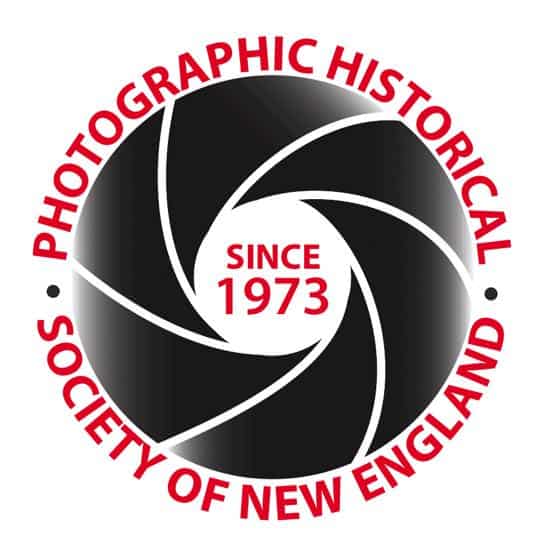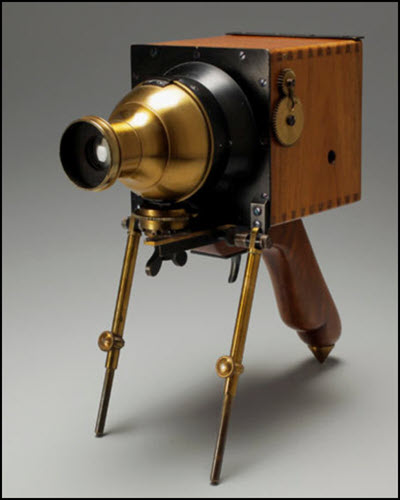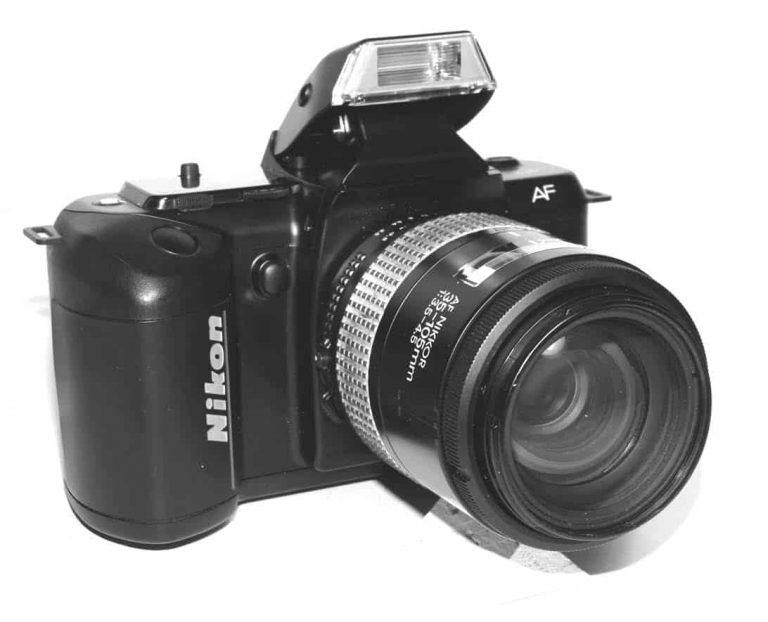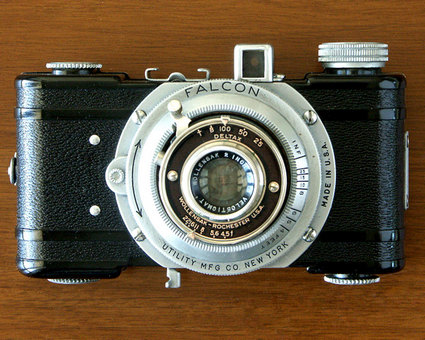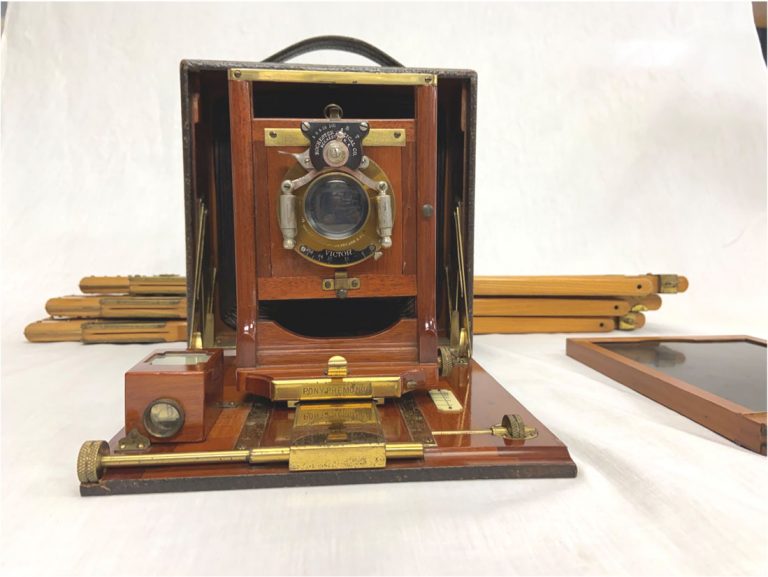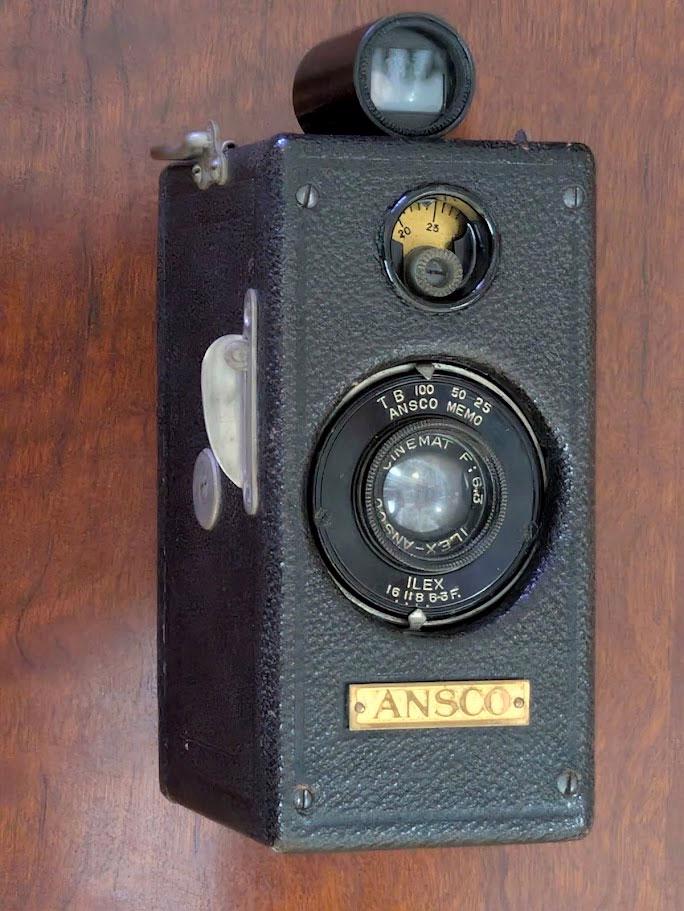
Introduced in 1927, the Ansco Memo is reputed to be the first American 35mm still camera. These cameras shot cine film—35mm perforated movie stock—that was rolled into dedicated Ansco metal film cartridges (earlier cartridges were made of wood). This was before Kodak introduced the standardized 135 daylight-loading film cartridge in 1934.
Film was advanced by a clever spring-action claw, similar to a movie camera that shoots one frame at a time. It took 50 shots on a strip of film in half-frame format (18x24mm). Source: https://josephgreco.weebly.com/memo.html.
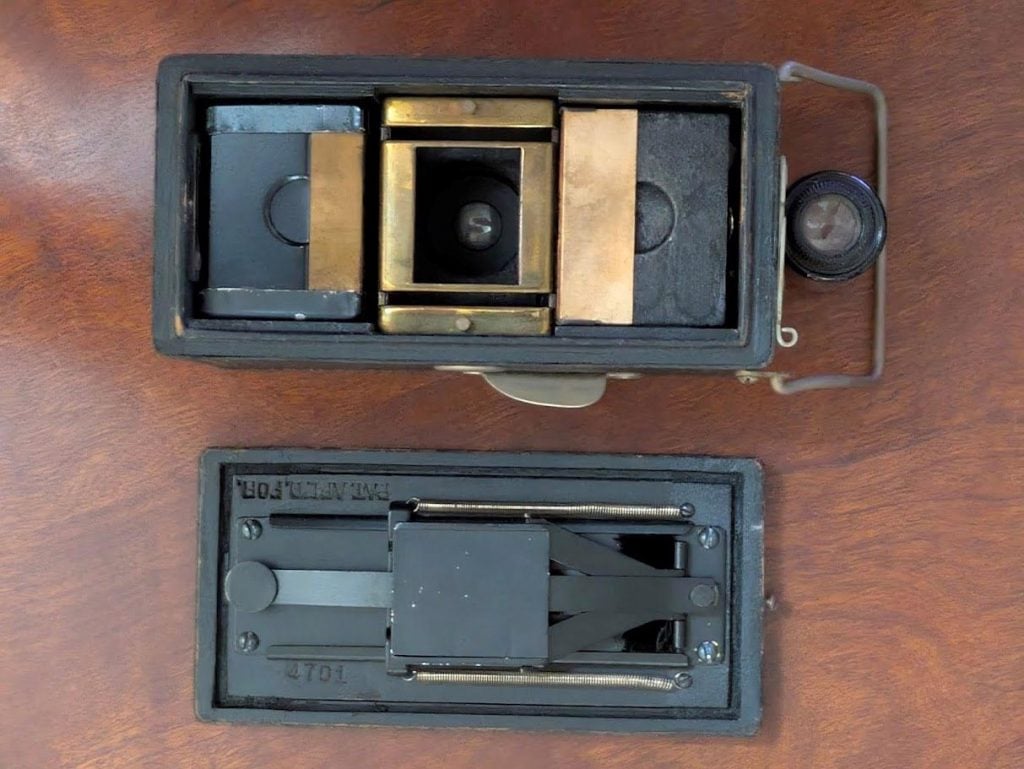
The Memo is a compact box-style camera, measuring 2 x 2.5 x 4 inches. Because of its small size, bright viewfinder, and ability to shoot rapidly, the camera was often used by private detectives. However, an AI source notes that “it was clearly intended for casual photography—not industrial or surveillance use.” Atypically, film advances vertically in the manner of movie cameras, compared to the horizontal feed in most 35mm cameras.
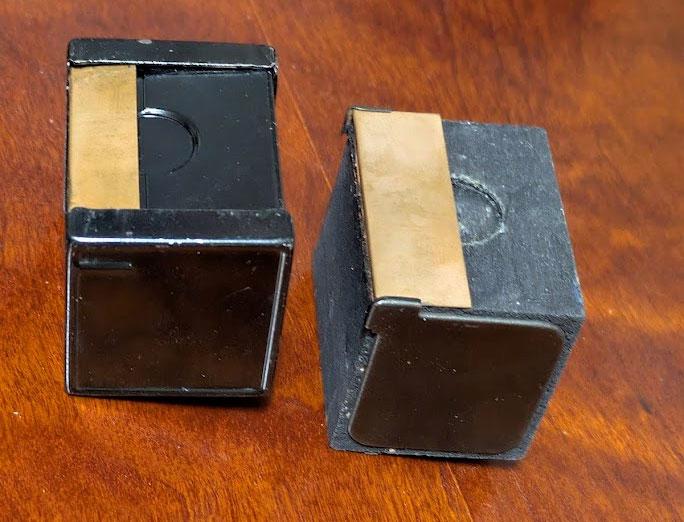
Various models were produced over time, including early cameras made of varnished wood with brass fittings and later models of leather-covered wood with a shutter release guard. There was also a Boy Scout version finished in olive and carrying the Scout insignia. Lower- and higher-end models featured different lenses: the lower-end versions used fixed-focus Ibex Cinemat or Wollensak Velostigmat lenses, while the higher-end models offered high-quality focusing lenses. The large, bright viewfinder could be used comfortably while wearing eyeglasses.
The Ilex shutter offered speeds of Time, Bulb, 1/25, 1/100, and 1/500. The camera also included a tripod socket on the bottom.
Photos by Vladimir Khazan
What the heck…
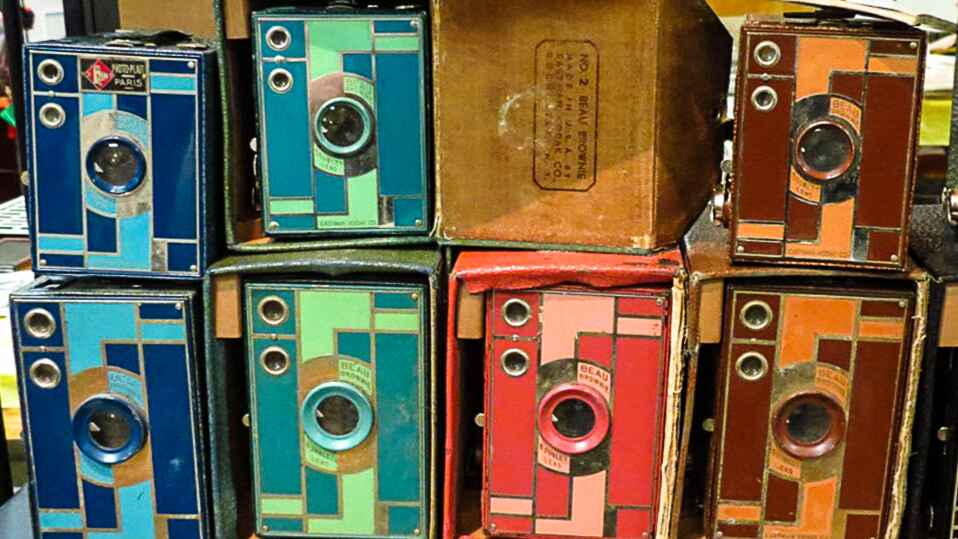
Are Those Even Cameras?!
Join the PHSNE Newsletter and learn more about photographic history and preservation. Already an expert? Come and share your collections and knowledge as we celebrate the history and advancement of photography.
